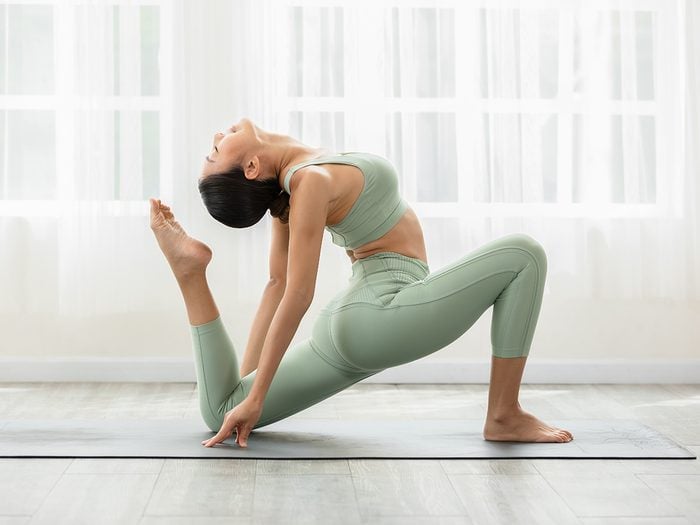
Facts About Yoga to Meditate On
From ancient times to modern day
It’s been around for roughly 5,000 years—first appearing in the Rig-Veda (or Rigveda), the oldest of the sacred books on Hinduism—but yoga is more popular today than ever. Experts say its accessibility and the fact that you can practise it anywhere are big reasons why. An estimated six million Canadians regularly hit the mat, and more than 300 million people practise worldwide.
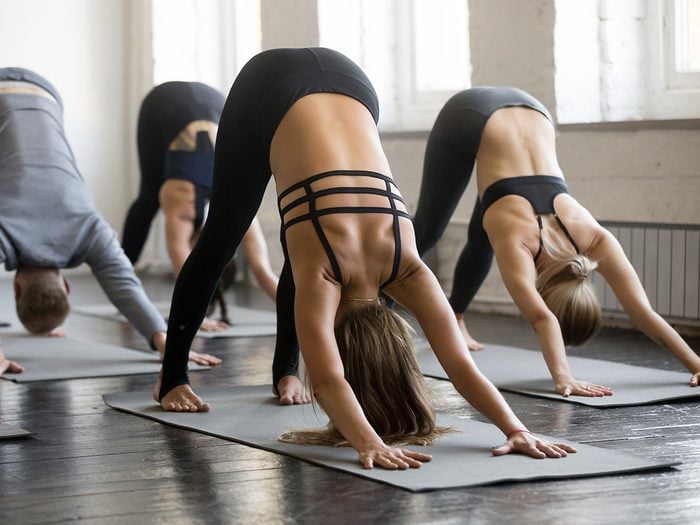
Philosophy of yoga
Westerners adopted yoga as a form of exercise, but at its roots, yoga is a way of life. The philosophy of yoga, recorded in the Yoga Sutras by the Indian philosopher Patanjali, is based on the idea that the mind, body and spirit are one. The breath is said to carry a person’s life force. Many gurus believe that controlling the breath rejuvenates the body and can extend your life.
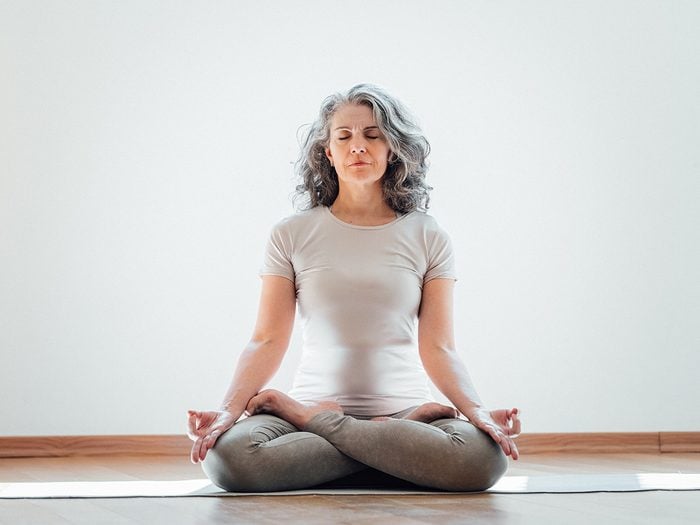
A world of benefits
In addition to reducing stress, yoga can improve your posture and balance, strengthen bones and muscles and keep your back and joints healthy. Different poses offer different benefits. Downward-facing dog can help relieve back pain, while plank pose is good for building a strong core and upper body. For a quick break, come to your hands and knees and sit back, bringing your chest to the floor, with arms outstretched for child’s pose—a gentle stretch that helps you rest and refocus.
Here are the best exercises for seniors.
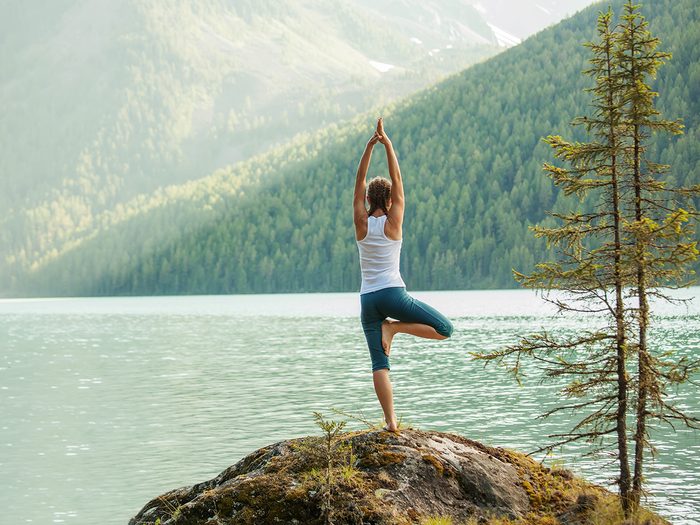
The language of yoga
If you’re new to yoga, you might hear some words during class that you don’t recognize, like Tadasana (mountain pose) or Uttanasana (standing forward bend). These words are Sanskrit, the root of many Indian languages—and the language of yoga. Today, it’s spoken by less than one percent of Indians. Yoga (yuj) means “to yoke” or “to unite,” and refers to the merging of the two selves: the individual and the divine.
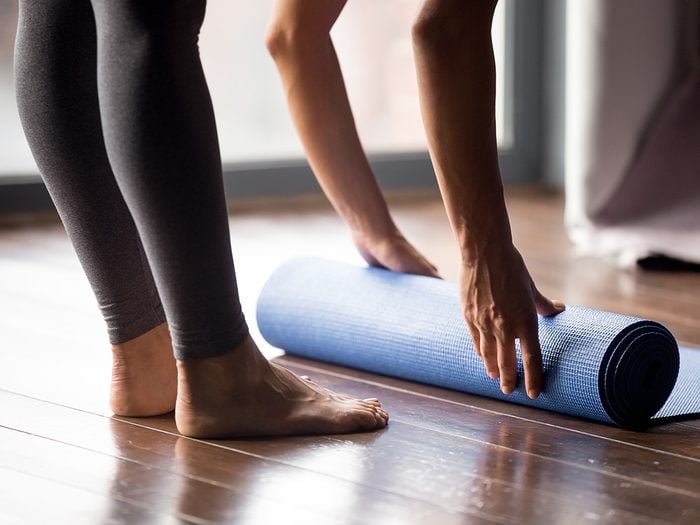
Yoga goes global
Hindu monk Swami Vivekananda is credited with popularizing yoga in the West. In 1893, he travelled from India to Chicago for the World’s Fair and gave a groundbreaking speech calling for religious tolerance for which he received a two-minute standing ovation. He went on to write numerous books including Raja Yoga, published in the United States in 1896, which adapted Patanjali’s Yoga Sutras for a western audience.
These are the best workouts for people who hate exercise.
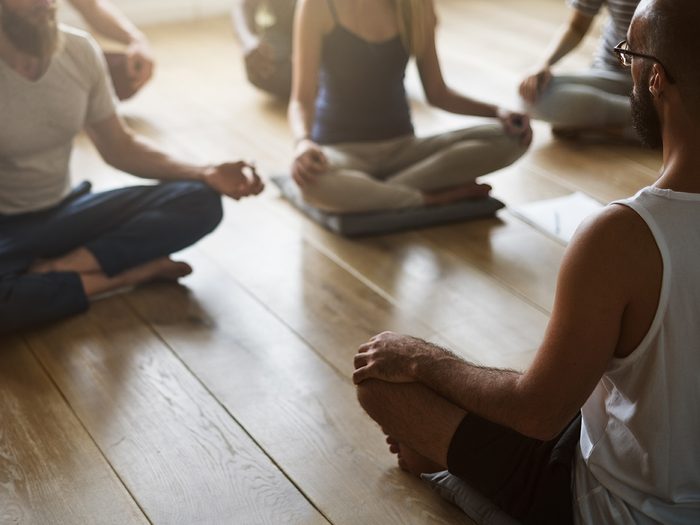
Big business
Yoga has since become a huge business: The industry generated US$37 billion globally in 2019 and is expected to generate US$66 billion annually by 2027. Famous practitioners include Madonna, Meghan Markle, Jennifer Aniston, NBA star LeBron James and Paul McCartney—who in 2020, at the age of 78, told podcast listeners that he regularly practises headstand pose.
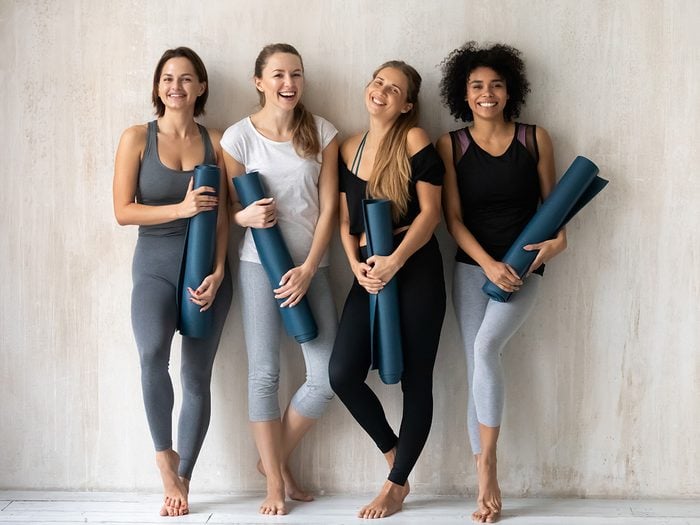
Yoga pants
Wearing yoga pants—stretchy, sweat-wicking bottoms typically thicker than leggings—used to mean you were on your way to yoga class, but today they’re worn everywhere from the gym to the office. Lululemon, founded in 1998, is frequently credited as the inventor of the modern-day yoga pant. Despite a costly recall in 2013, after their black nylon-and-Lycra pants were found to be see-through, the brand still dominates yoga wear, with US$8 billion in global sales in 2022.
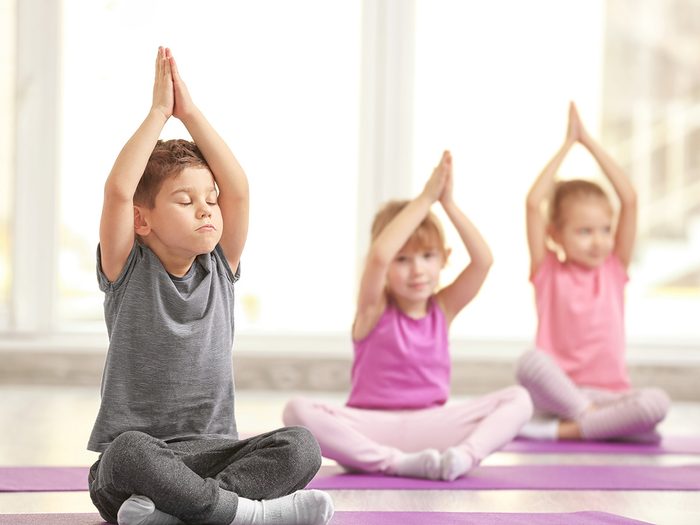
It’s good for kids, too
Kids are striking a pose, too, and the benefits are more than physical. Yoga can help reduce anxiety and improve focus in children, which is especially beneficial for kids with attention deficit hyperactivity disorder (ADHD). It’s also been found to help children with autism spectrum disorder improve their emotional-regulation abilities.
Read about the mental and physical benefits of regular exercise.
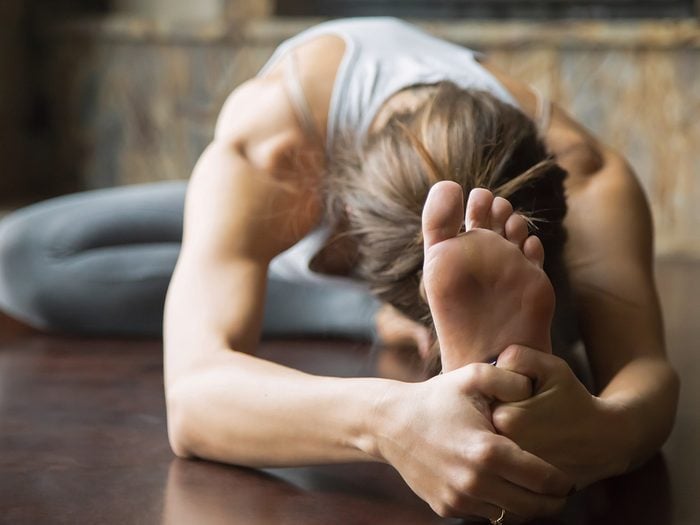
Preventing injury
Yoga might not seem like an activity that can send you to the hospital, but a 13-year U.S. study found that between 2001 and 2014, almost 30,000 individuals went to the ER with a yoga-related injury. Strains, sprains and overstretching tend to be the most common issues, but serious injuries—although rare—can happen even to advanced yogis. One 39-year-old woman suffered a stroke after tearing an artery while attempting a handstand pose. To prevent injury, work with a qualified instructor, warm up thoroughly and don’t try positions beyond your comfort level.
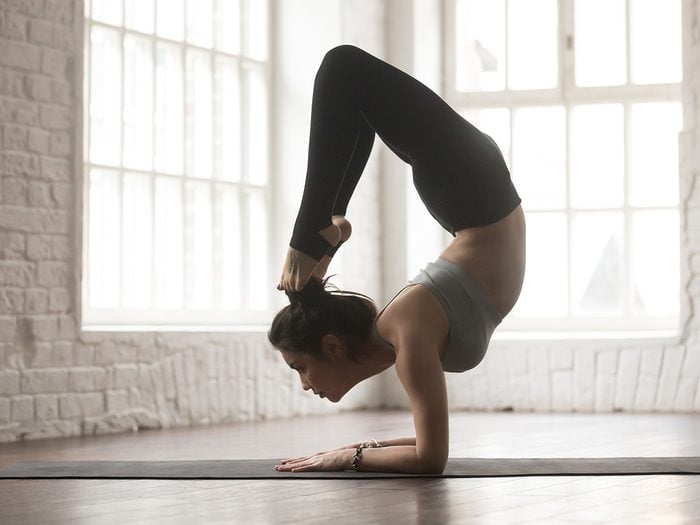
A record-busting handstand
Dubai-based instructor Yash Moradiya, 22, is a nine-time Guinness World Record holder for his ability to maintain different yoga poses. In 2022, he broke the record for holding the very difficult upside-down scorpion (Vrischikasana) position—in which one’s head and toes touch while doing a handstand!—with a time of 29 minutes and four seconds. To prepare, he practised for three hours a day for five years.
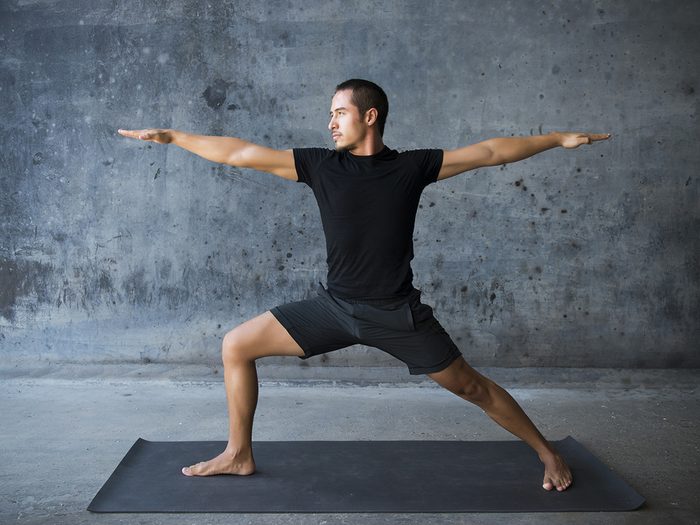
Flow? Ashtanga? Hot yoga?
Vinyasa yoga, also called flow, is one of the most popular styles in the West. It focuses on linking a series of poses with the breath in a quick, fluid pace. Ashtanga is like vinyasa, but more structured: it is made up of a series of postures done in the same order every time. Hot yoga is performed in a sauna-like room heated between 33 to 40 degrees Celsius. The heat is said to increase stamina, flexibility and calorie burn.
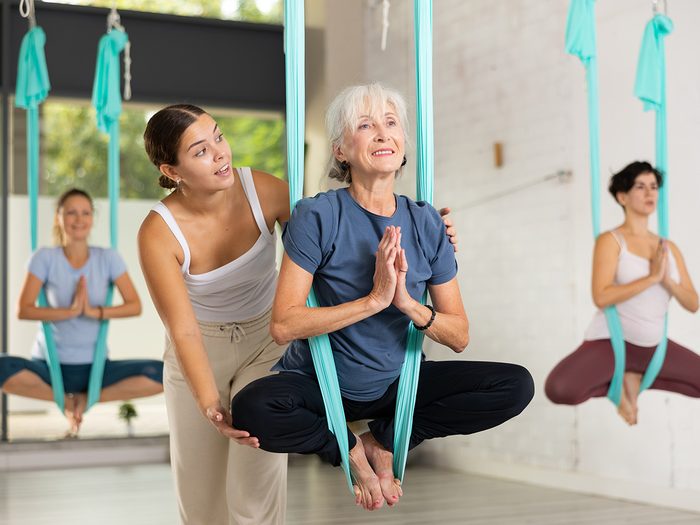
Unique variations
Already into yoga and looking to change up your practice? Try one of the many modern yoga variations. Aerial yoga involves hanging from a silk hammock suspended from the ceiling; it reduces the joint pressure some people might feel while doing floor poses. And animal yoga is less about mastering poses and more about decreasing stress and boosting your mood by practising alongside puppies, goats and even horses.
Read about one person’s experience trying chair yoga.
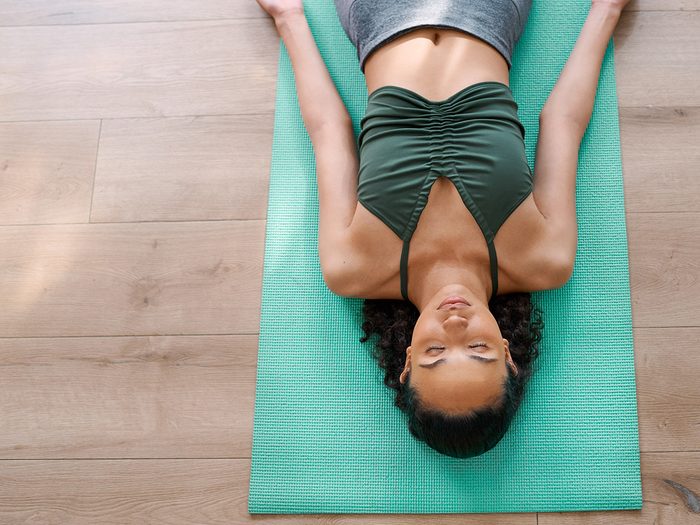
End-of-class challenge
Corpse pose, or Savasana, looks simple: It involves lying flat on one’s back, with arms resting beside the body, palms facing up, eyes closed. But it can be deceivingly difficult to master, as it calls for a state of meditative calm. Typically the final position of a yoga class, the purpose of this pose is to allow your practice to settle in your mind and body, and it’s ideally done for at least five minutes. After that, you and your classmates typically acknowledge each other with a greeting even non-yogis know: Namaste.
Next: Are green powders a waste of money?